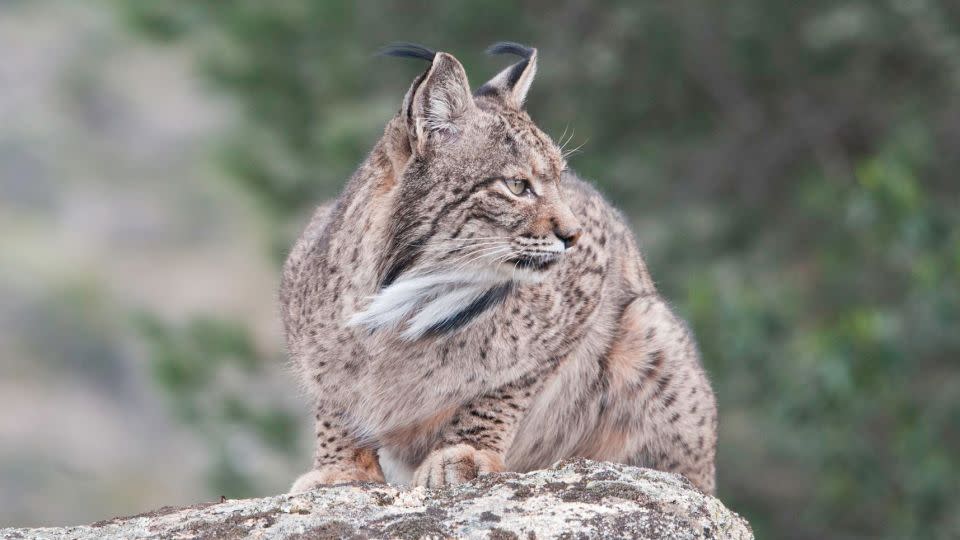Editor’s note: Sign up for CNN’s Wonder Theory science newsletter. Explore the universe with news on fascinating discoveries, scientific advancements and more.
As astronauts and engineers are fond of saying, space is hard. But that has never stopped bright minds from dreaming big.
A Seattle-based company has resurrected NASA’s plans for a space plane, abandoned in 2001 due to technical difficulties. Radian Aerospace wants to replace vertical rocket launches with planes that launch to space from a rocket-powered sled. Still, such reinvention won’t be easy.
Meanwhile, the fate of Boeing’s Starliner under NASA’s Commercial Crew Program — ultimately determining if it will become a spacecraft that could one day ferry astronauts to low-Earth orbit — hangs in the balance.
The spacecraft successfully launched and delivered NASA astronauts Butch Wilmore and Suni Williams to the International Space Station in June. But what seemed like an eight-day jaunt turned into months of questions surrounding Starliner’s ability to return the crew safely to Earth.
Now, thruster issues have led NASA and Boeing to send Starliner back home without the two astronauts to conclude the mission before going back to the drawing board.
Defying gravity
After nearly three months, the Starliner spacecraft returned to Earth without the two test pilots after undocking from the space station Friday night and parachuting into the New Mexico desert early Saturday.
Starliner is the first US-made capsule to parachute to a ground landing, rather than splashing into the ocean.
Wilmore and Williams watched their spacecraft depart and will remain on the orbiting laboratory until 2025.
“There’s a piece of us, all of us, that we wish it would have been the way we had planned it. We had planned to have the mission land with Butch and Suni on board,” said Steve Stich, manager for NASA’s Commercial Crew Program.
Now that Starliner is back on Earth, Boeing engineers will study the spacecraft and determine what work needs to be done to solve the issues that cropped up during its initial flight to space. It remains to be seen how and when Starliner will be certified to carry astronauts regularly to space.
Ocean secrets
Researchers tagged a pregnant porbeagle shark off Cape Cod in Massachusetts to track her movements and see where she would give birth.
But five months later, her tag floated to the ocean’s surface, and the team realized a large predator had likely eaten the shark.
The research turned into a scientific murder mystery, and two likely suspects appeared in the waters where the porbeagle disappeared: great white and shortfin mako sharks.
The discovery reveals shark behavior is more complex than previously thought, and large sharks hunting one another may be a common behavior.
Wild kingdom


The Iberian lynx has come back from the brink of extinction after decades of conservation work — and new technology could ensure that Spain’s lynx population has a long future.
Habitat loss, a decline in food sources and road accidents were the lynx’s biggest obstacles. Then, the European Union and the Spanish government funded a hefty project to restore habitats and prey.
But the Iberian lynx remains threatened. To protect the cats from becoming roadkill on busy highways, conservationists are installing virtual fences equipped with sensors that use sound and light alarms. And in the future, scientists may engineer scent corridors that create artificial trails to connect different lynx populations.
Other worlds
An asteroid 20 times the size of the one that wiped out the dinosaurs could have slammed into Jupiter’s moon Ganymede 4 billion years ago, according to new research.
The massive impact might have caused the moon, which is the largest in the solar system, to shift on its axis.
Astronomers could uncover more answers about Ganymede’s history, as well as how the impact affected the global ocean beneath its icy surface, when the European Space Agency’s Juice spacecraft is set to arrive and study the moon in 2031.
Meanwhile, a small asteroid created a flash as it burned up in Earth’s atmosphere over the Philippines near Luzon Island this week.
Curiosities


Researchers were able to watch a mouse’s organs function after making its skin temporarily transparent using a common substance: yellow food dye mixed with water.
The scientists applied the mixture to the skin on the skulls and bellies of live mice. Then the team was able to observe blood vessels directly in the brain’s surface as well as muscle contractions moving food through the digestive tracts.
When the light-absorbing dye mixes with water, it suppresses the skin tissue’s ability to scatter light.
The scientific breakthrough, similar to the plot of H.G. Wells “The Invisible Man,” could revolutionize biomedical research and make veins more visible for blood draws.
Discoveries
Grab your favorite morning brew and settle in with these fresh reads:
— A team led by Cornell University researchers has engineered robots that are controlled by king oyster mushrooms in a feat that blends living organisms and machines.
— New photos taken at the site of the Titanic show how much the 1912 shipwreck has decayed in recent years and revealed the location of a surprisingly intact statue of a Roman goddess.
— An amateur archaeologist unearthed an ancient, intricate kite-shaped ring buried at the site of a fort in northeast Scotland for more than 1,000 years.
Like what you’ve read? Oh, but there’s more. Sign up here to receive in your inbox the next edition of Wonder Theory, brought to you by CNN Space and Science writers Ashley Strickland and Katie Hunt. They find wonder in planets beyond our solar system and discoveries from the ancient world.
For more CNN news and newsletters create an account at CNN.com
